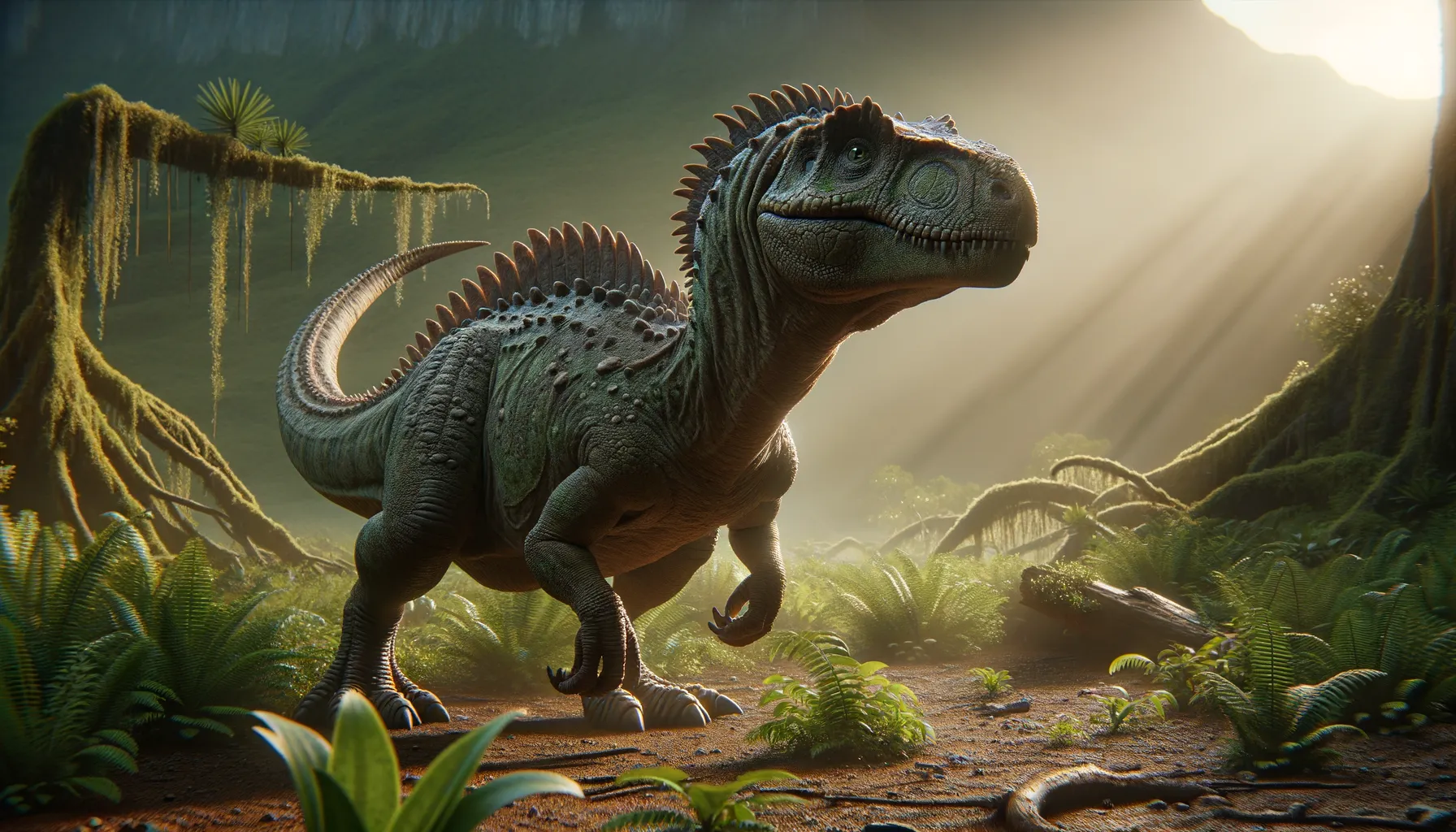
Silvisaurus
Armored survivor of the ancient past!
Period
Cretaceous
Length
About 4 meters long.
Height
Roughly 1.5 meters tall.
Weight
Approximately 1,000 kilograms.
Silvisaurus was a small, heavily-armored dinosaur known for its tough, scaly skin and strong, bony plates that protected it from predators. Living during the Cretaceous period, it primarily grazed on plants and leaves. Its sturdy build and defensive adaptations made it well-equipped to survive in its challenging environment, and it played a vital role in the ecosystem as a herbivore, coexisting alongside other plant-eating and carnivorous dinosaurs.
Diet
Silvisaurus was a herbivore, feeding on a diet of plants and shrubs. Its teeth were well-suited for cropping vegetation, enabling it to grind tough plant material.
Hunting
As an herbivore, Silvisaurus did not hunt for food. Instead, it foraged for plants in its environment, using its beak-like mouth to clip leaves and stems.
Environmental challenges
Living during the Late Cretaceous, Silvisaurus faced challenges such as fluctuating climate conditions and competition for food. Its environment included diverse ecosystems with predators lurking nearby. Natural events like volcanic activity or shifting landscapes also posed potential threats.
Speed
It moved slowly due to its heavy armor.
Lifespan
Estimated to live around 30 years.
First discovery
Found in Kansas in the early 1960s.
Fun Facts
- Silvisaurus was a medium-sized dinosaur that lived during the Early Cretaceous period.
- It was an armored dinosaur, belonging to a group known as nodosaurids, which were known for their bony plates and spikes.
- Silvisaurus was herbivorous, feeding on plants that grew in the forests of ancient North America.
- The name 'Silvisaurus' means 'forest lizard,' reflecting its woodland habitat.
- Its fossil remains were first discovered in Kansas, USA, in the 1960s.
- Unlike some larger dinosaurs, Silvisaurus was about the size of a modern-day pony.
- Silvisaurus had a small, beaked mouth ideal for plucking leaves and vegetation.
Growth and Development
Silvisaurus experienced a gradual growth process, reaching maturity over several years. Young Silvisaurus were vulnerable and relied on their covert, forested habitats to hide from predators. As they aged, their armored bodies became more robust, providing better protection.
Habitat
Silvisaurus inhabited forested areas where dense vegetation provided both food and concealment from predators. The rich plant life allowed diverse herbivores to coexist. This environment likely offered safety through camouflage, helping them avoid aggressive carnivores and harsh climatic conditions.
Interaction with other species
Silvisaurus coexisted with various herbivorous and carnivorous dinosaurs, sometimes competing for resources like food and territory. Its armor offered protection, deterring some predators from attacking. It likely formed groups for additional safety, enhancing survival against predatory threats.
Natural lifespan
Silvisaurus potentially lived for up to 30 years in the wild.
Reproduction
Reproduction occurred through egg-laying, with nests possibly built in hidden locations for protection. The eggs hatched into young dinosaurs, which required parental care during early development stages. This care ensured higher survival rates in a hazardous environment.
Social behaviour
Silvisaurus might have exhibited social behavior, living in small groups to deter predators. Group living offered protection through numbers, reducing individual vulnerability. Social bonds potentially enhanced communication and coordination within groups while foraging or avoiding danger.
Fossil locations
Fossils of Silvisaurus have been predominantly found in and around Kansas, USA. These discoveries provide important insights into its physical structure and the environment it lived in. The quality of fossils has helped paleontologists understand its evolutionary adaptations.
